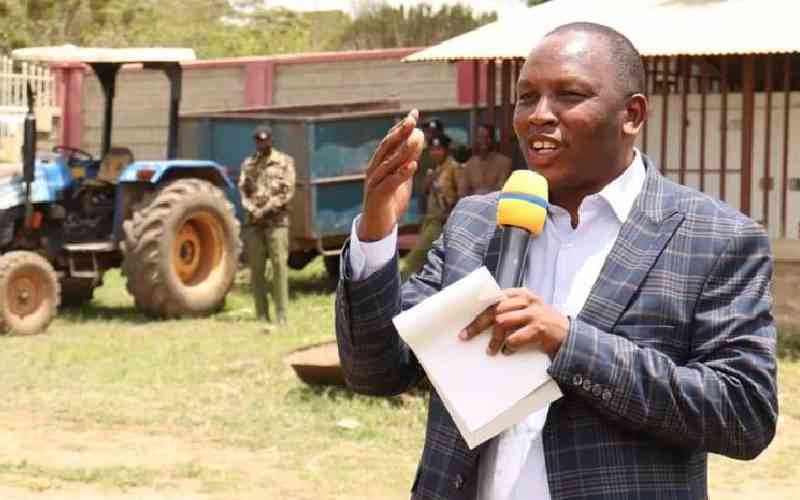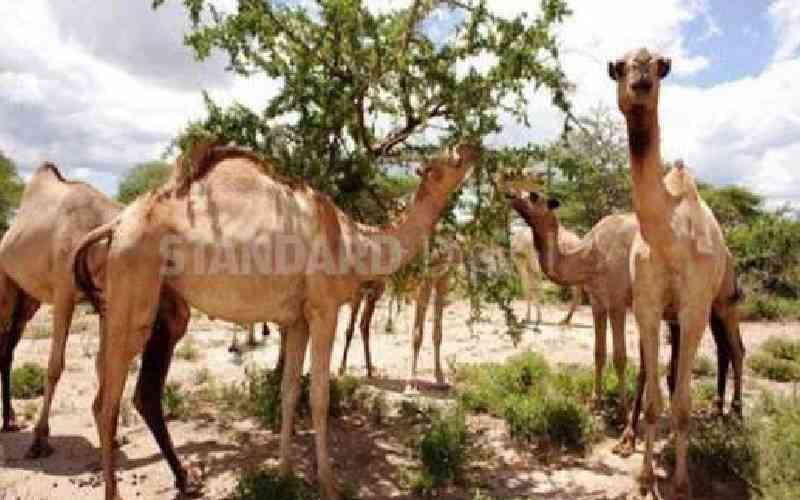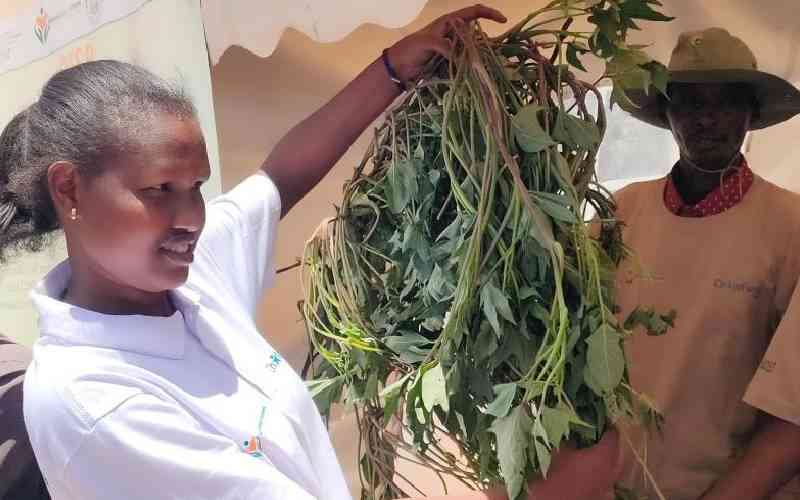The Samburu are a people who have stuck to their traditions, and the rite of passage for morans is an elaborate affair as PETER MUIRURI found out
That the Samburu are a colourful people is not in doubt. Like their cousins, the Maasai, many visitors from around the globe are drawn to this community owing to their rich cultural heritage.
On a recent visit to Maralal, in the northern reaches of the country, I got the chance to observe one of the festivals that characterise the rite of passage for a young Samburu moran.
Getting to the venue, however, is not for the fainthearted. It had rained heavily in Maralal the previous night, the last thing any visitor to the area would wish for owing to the town’s poor infrastructure.
On this day, myself and a group of journalists who were in the vicinity on assignment, lay in our tiny hotel rooms with little to do except look forward to the long and tiring trip back to Nairobi the following day. Few were enthusiastic about venturing outdoors.
“We would need a four-wheel drive vehicle for the river crossing,” said a scribe from a local media house who had a good knowledge of the local terrain.
River crossing? We should as well have looked for a ferry. However, a number of us warmed up to the idea of heading to the venue of the festival.
A flooded river, a soggy quagmire, and a dense Kirisia Forest with no marked routes were the obstacles to our quest.
After close to an hour negotiating the rolling hills, the heavy smell of meat gave us the much needed direction. After all, this is Samburu country and no festival is complete without roasted meat.
In a clearing in the forest, an elaborate manyatta had been set up. The place was full of animal droppings and could easily pass for a location that had been inhabited for ages, yet, this was a temporary home for the 200 or so young men who there for the naming ceremony of their new age-group. The group would then leave the old ways of the lkichami and adopt the new name lkugwari.
After a month of seclusion in the forest, the young men would dismantle the entire manyatta in an effort to conserve Kirisia Forest. No other event of this kind would be held here in the future.
Seated on a hill 200 metres away from the manyatta were three young men, Lenalepi Lirtimirwa, Lenyasangaram Lotoro and John Letiwa — all in their late teens or early 20s. John acted as their spokesman.
He explained to us the importance of this ceremony: “Most of the young men here were circumcised about seven or eight years ago. We are happy to be here to get a new name for our age group. Now we can marry our girlfriends.”
If you are thinking that the ceremony was for idle Samburu youths bent on tradition, you are wrong. As John told me, some of his agemates here are highly educated youths with a number serving in the military and the police. I even got to know that a journalist was among the “graduates.”
I left the young men mulling on their future roles in the community and joined a group of elders lying down a little distance away.
Stay informed. Subscribe to our newsletter
I engaged Sammy Lekume, a father to one of two young men in the ceremony. He could not hide his joy that his son was no longer a boy and was graduating into a junior warrior and elder.
The pride of raising sons to become respected members of the society is a source of pride for any Samburu father.
His role as a father, he said, is to guide the boys and initiate them into adulthood. In three years or so, his sons will graduate into junior elders.
James Loldepe, another elder told me how he went through a similar ceremony held in another part of Kirisia in 1996 before he met his wife Agnes.
“There is nothing better than to know that you have upheld the customs of your people,” he said.
I ventured closer to the manyatta. However, a group of morans serving as security personnel are stationed on the entrances to prevent any unauthorised entry. A white flag stands in the middle of the boma.
Peace
Sammy, my now reliable guide told me it stands for the peaceful relations that exist among all the participants in the event drawn from different families. They would be staying here for a whole month and it is only fair that peace prevails.
Further away from the manyatta, smoke billowed unceasingly. This was the meat-roasting site. I was dying to access the area.
Just then, the thundering sound of a chopper shatters the calm skies above Kirisia. The smell of meat must have attracted one presidential aspirant in the General Election next year. It turned out he had been holding several campaign meetings in the area and was eager to meet the morans.
A group of elders escort him deep into the forest where more morans are feasting. This was my ticket to the feast. There was no elaborate seating system here, and we made ourselves comfortable on the uneven ground. Chunks of meat were laid down on some twigs.
A few swords were unsheathed by the young men who took turns feeding the elders. There was no single woman on this particular spot. The women are concentrated around the manyatta and would have to wait for their turn to eat.
Each young man there had contributed a cow and a goat. They would have to feed exclusively on the meat and soup. To ward off any stomach issues, the young men would boil the twigs of lkilorit, a type of the acacia tree.
At the end of the ceremony, the young morans perform a courtship dance, known as lmuget, where they get to sweet-talk a girl of their choice followed by blessings from the elders. And one day, one of these young men may be anointed as the highly regarded ‘president’ of this age-group known as launoni.
My only wish was to be a Samburu initiate, at least for the goat eating ceremony.
 The Standard Group Plc is a
multi-media organization with investments in media platforms spanning newspaper
print operations, television, radio broadcasting, digital and online services. The
Standard Group is recognized as a leading multi-media house in Kenya with a key
influence in matters of national and international interest.
The Standard Group Plc is a
multi-media organization with investments in media platforms spanning newspaper
print operations, television, radio broadcasting, digital and online services. The
Standard Group is recognized as a leading multi-media house in Kenya with a key
influence in matters of national and international interest.
 The Standard Group Plc is a
multi-media organization with investments in media platforms spanning newspaper
print operations, television, radio broadcasting, digital and online services. The
Standard Group is recognized as a leading multi-media house in Kenya with a key
influence in matters of national and international interest.
The Standard Group Plc is a
multi-media organization with investments in media platforms spanning newspaper
print operations, television, radio broadcasting, digital and online services. The
Standard Group is recognized as a leading multi-media house in Kenya with a key
influence in matters of national and international interest.









